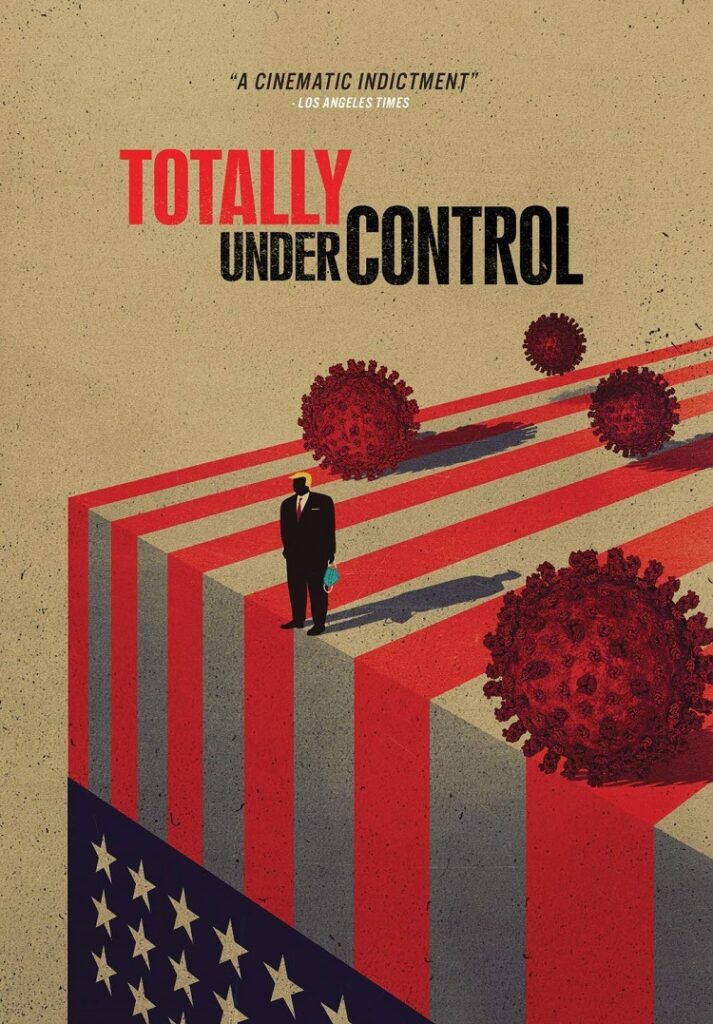
Written by Ram Venkat Srikar
The obligation while reviewing documentaries that has always challenged and fascinated me is to create a clear distinction between the film’s subject matter and filmmaking craft. Totally Under Control is no exception, and is, perhaps, a bigger challenge as compared to other documentaries ascribed to its germane nature with which it addresses the prevailing COVID-19 situation.
One certainly cannot – and should not – overlook its relevance. After all, the film’s fundamental motive is evolving as you read this. Probably the most felicitous film you can get your hands on at the present, Totally Under Control is a conscientiously infuriating and trepidatious documentation of a colossal failure. Set amid the raging pandemic, i.e. the present, the film brings the facts pertaining to what went wrong through experts such medical professionals, scientists, government officials, and journalists, among other professionals who remain feeble witnesses, watching the flagrant power at play that scorns the menace of COVID-19.
The documentary’s structure mirrors the screenplay of any classic disaster movie. The first 30 minutes are spent embracing what could imminently betide and disrupt the lives of millions, and the rest of the runtime is devoted to hammering the administration that miserably failed in controlling a tenable outbreak, aided by scientific facts and firsthand experiences. The film has a clear objective – shed light on how politics thwarted science in clobbering the virus and the trouncing consequences. It surpasses its aim with ease within the first half upheld by the information – comprising facts, figures, and analytics – that paint a lucid picture of what transpired behind, coupled with our understanding of the present situation. And then, it further magnifies the minutest of the flaws, leaving no stone unturned.
What these interviews with experts do is not just provide information, but bring the inconspicuous decisions and actions that panned out in the background to the foreground. In other words, it’s a prequel to the exploding rates of infection, disclosing every political move that cumulatively contributed to the disaster. For a film that has its teeth sunk in the conflict between politics and science, it takes the risk of staying devoid of the tragic, humanistic side of the pandemic to a major extent, relying on our awareness. It pays off. At times, it seamlessly expands its focus. For instance, Dr. Taison Bell’s concerns regarding the pandemic’s impact on the African-American community – citing them as more than just ‘numbers’ – summon that regardless of how much the statistics take over, everything is still propelled by human actions.
The most intriguing facet of the film is the way science and politics gradually start reflecting the good side and the evil side, respectively. The difference between scientists and politicians grows stark with each reveal and passing minute. Every move strengthens its argument against the president. For instance, Dr. Rick Bright, a senior medical expert, is fired for trying to counter the president’s untrue claim of using hydroxychloroquine to cure the infection. The sillier the political side becomes, the more challenging it becomes for the science side.
Moreover, with a gargantuan volume of medical statistics and testimonials at its deposition, the film – blending the writing and editing – skillfully uses them as tools to scrutinize and disseminate the false words of assurance from the president, “totally under control,” when it is not. It lambastes him. Not blatantly, but with precision and rationality.
From a trio of filmmakers – Alex Gibney, Ophelia Harutyunyan, and Suzanne Hillinger – Totally Under Control is informative and provocative in equal proportions, urging the viewer to look beyond the obvious. It is by no means a propaganda film, though. The timing suggests otherwise, but there cannot be better timing than this, considering it spurs viewers to apprehend why they are in the thick of the pandemic, pointing at the political mishaps over the past nine months that collectively contributed to what’s around them at the moment.
It is both timely and timeless. Being a critique on the Trump administration’s failure to contain the COVID-19 outbreak in the US, it is timely. By serving as a perfunctory piece of documentation, unraveling the circumstances that built up to the ongoing catastrophe, it is timeless.